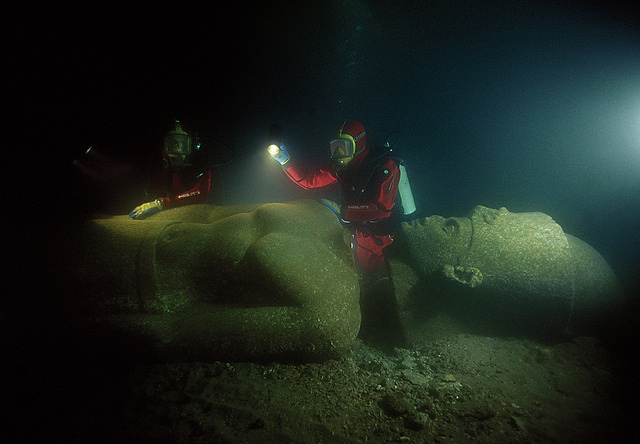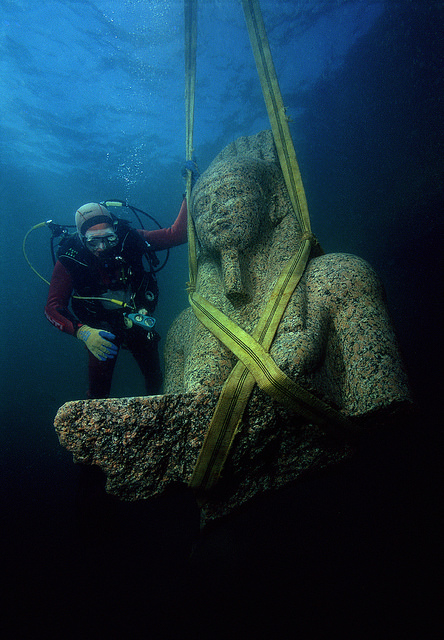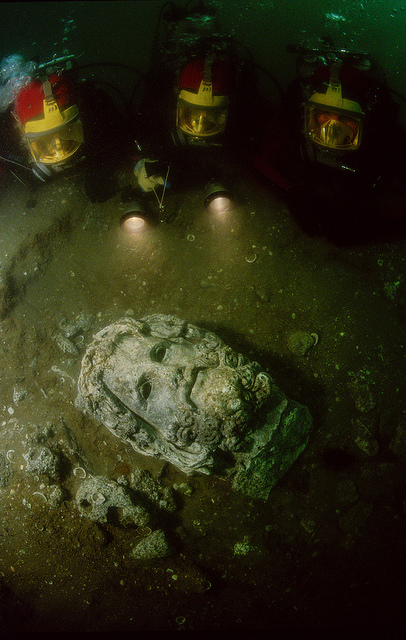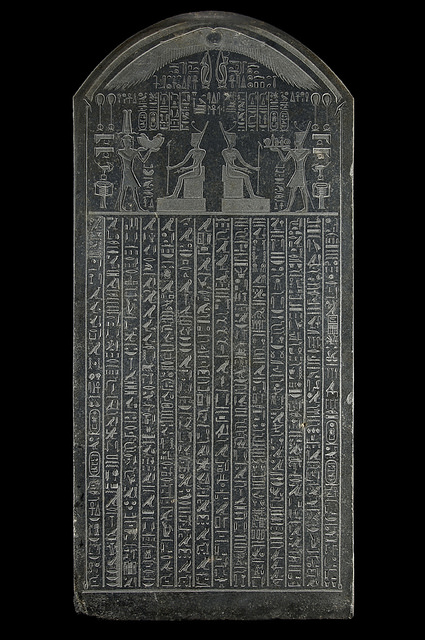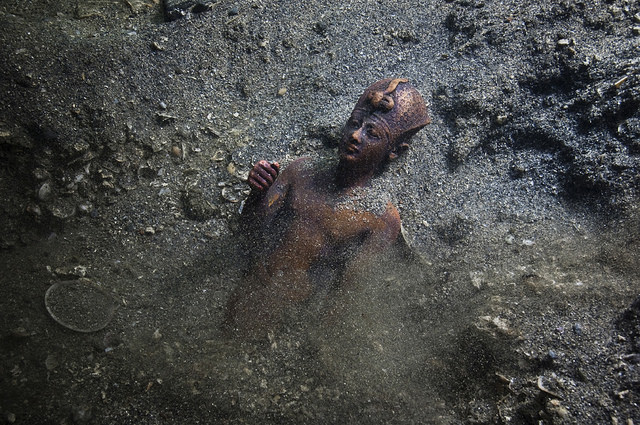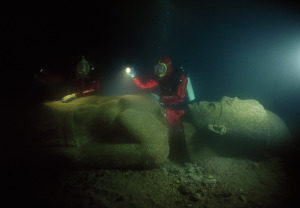 Aboukir - Sunken Cities
Aboukir - Sunken Cities ST. LOUIS, Nov. 20 — The Saint Louis Art Museum next year will present “Sunken Cities: Egypt’s Lost Worlds,” an exhibition showcasing antiquities from one of the greatest finds in the history of underwater archaeology. The North American premiere of “Sunken Cities” will be the most significant exhibition of ancient Egyptian art undertaken in St. Louis in more than 50 years.
Featuring colossal, 16-foot-tall sculptures and precious artifacts from the long-lost cities of Thonis-Heracleion and Canopus, “Sunken Cities” focuses on discoveries made during the last seven years of underwater excavation lead by Franck Goddio, president of the European Institute for Underwater Archaeology.
“Sunken Cities” opens March 25 and will be on view for an extended, six-month run. It recently was shown at the Museum Rietberg in Zurich, the British Museum in London and the Institut du Monde Arabe in Paris.
“We long have sought an exhibition of ancient Egyptian antiquities that combines both rigorous archaeological research with objects of the highest artistic quality, and ‘Sunken Cities’ was a perfect match for us,” said Brent R. Benjamin, the Barbara B. Taylor Director of the Saint Louis Art Museum. “The museum is pleased to bring this groundbreaking, visually stunning exhibition to St. Louis for its first viewing in America.”
The exhibition is organized by the European Institute for Underwater Archaeology with the generous support of the Hilti Foundation and in collaboration with the Ministry of Antiquities of the Arab Republic of Egypt. The presenting sponsor of the exhibition in St. Louis is the William T. Kemper Foundation–Commerce Bank, Trustee with lead corporate support from Edward Jones.
In addition to more than 250 works of art discovered by Goddio’s team, the exhibition also includes complementary artifacts from museums in Cairo and Alexandria, some of which never have been shown outside of Egypt.
Thonis-Heracleion—a modern arrangement of the city’s Egyptian and Greek names—was built in the Nile delta. The city reached its zenith in the Late Period (664–332 BC), when it served as Egypt’s main Mediterranean port. By 800 AD, different natural catastrophies such as earthquake and soil liquefaction had caused both Thonis-Heracleion and the nearby community of Canopus to submerge, and ruins remained underwater for more than 1,000 years.
In 2000, Goddio discovered Thonis-Heracleion under 30 feet of water more than four miles off the Egyptian coast. The French archeologist’s research has revealed that this area was important both as a center of trade and as a site of religious pilgrimage. The excavation also helped scholars understand the Mysteries of Osiris, an annual water procession along the canals between Thonis-Heracleion and Canopus commemorating one of Egypt’s most important myths—the murder and resurrection of the god Osiris.
“Sunken Cities: Egypt’s Lost Worlds” is curated by Goddio. The presentation in St. Louis is co-curated by Lisa Çakmak, associate curator of ancient art at the Saint Louis Art Museum.
Museum Members can obtain tickets for “Sunken Cities: Egypt’s Lost Worlds” at the museum and from MetroTix starting Nov. 24. Tickets for the public will be available Dec. 1.
Article Source: St. Louis Art Museum news release
_______________________________________
Colossal statue of a Ptolemaic king reassembled underwater after excavation and preliminary cleaning, Thonis-Heracleion, Egypt; red granite; Maritime Museum, Alexandria (SCA 279), IEASM Excavations
Photo: Christoph Gerigk © Franck Goddio/Hilti Foundation
_______________________________________________________
The bust of the colossal statue of the god Hapy has been strapped with webbings before being cautiously raised out of the water of Aboukir Bay, Egypt Photo: Christoph Gerigk © Franck Goddio/Hilti Foundation
_________________________________________________
Head of Serapis underwater on site in Canopus, Canopus, Egypt; 2nd century BC; marble; height: 23 1/4 inches; Bibliotheka Alexandrina, Alexandria (SCA 169), IEASM Excavations Photo: Christoph Gerigk © Franck Goddio/Hilti Foundation
___________________________________
“Stele of Thonis-Heracleion” Thonis-Heracleion, Aboukir Bay, Egypt, 378–362 BC; height: 74 13/16 inches; National Museum, Alexandria (SCA 277), IEASM Excavations Photo: Christoph Gerigk © Franck Goddio/Hilti Foundation
_________________________________
Bronze statuette of a pharaoh, Thonis-Heracleion, Aboukir Bay, Egypt; 30th–26th dynasty; height: 8 1/16 inches; (SCA 1305);
Photo: Christoph Gerigk © Franck Goddio/Hilti Foundation
____________________________________________________
The Saint Louis Art Museum is one of the nation’s leading comprehensive art museums with collections that include works of art of exceptional quality from virtually every culture and time period. Areas of notable depth include Oceanic art, pre-Columbian art, ancient Chinese bronzes and European and American art of the late 19th and 20th centuries, with particular strength in 20th-century German art. Admission to the Saint Louis Art Museum is free to all every day. For more information, call 314.721.0072 or visit slam.org.
____________________________________________________
Receive 30 days free access to the popular new CuriosityStream lineup of documentaries on science, history, nature, and technology as a new Popular Archaeology premium subscriber.
___________________________________________
Travel and learn with Far Horizons.
____________________________________________

